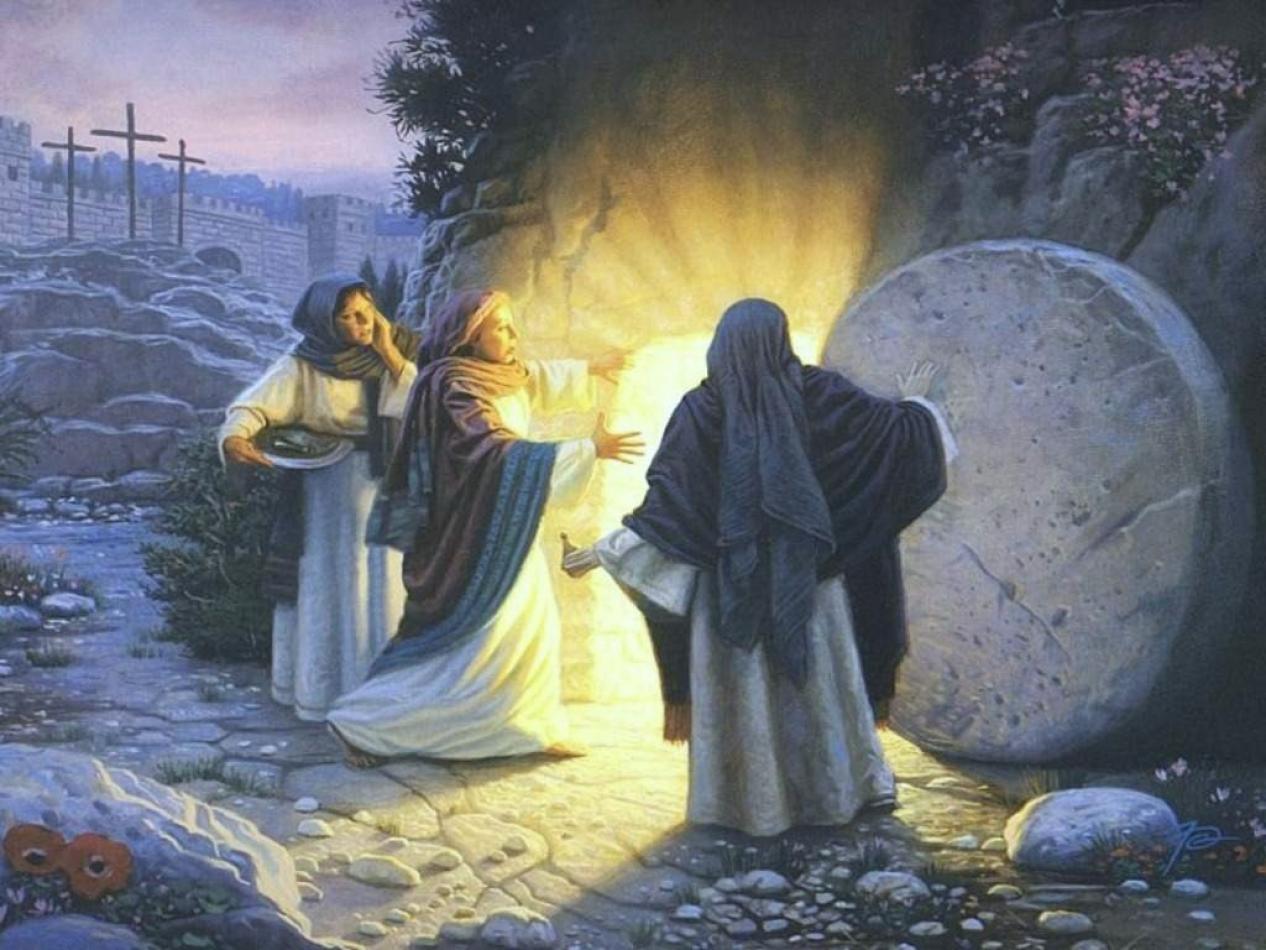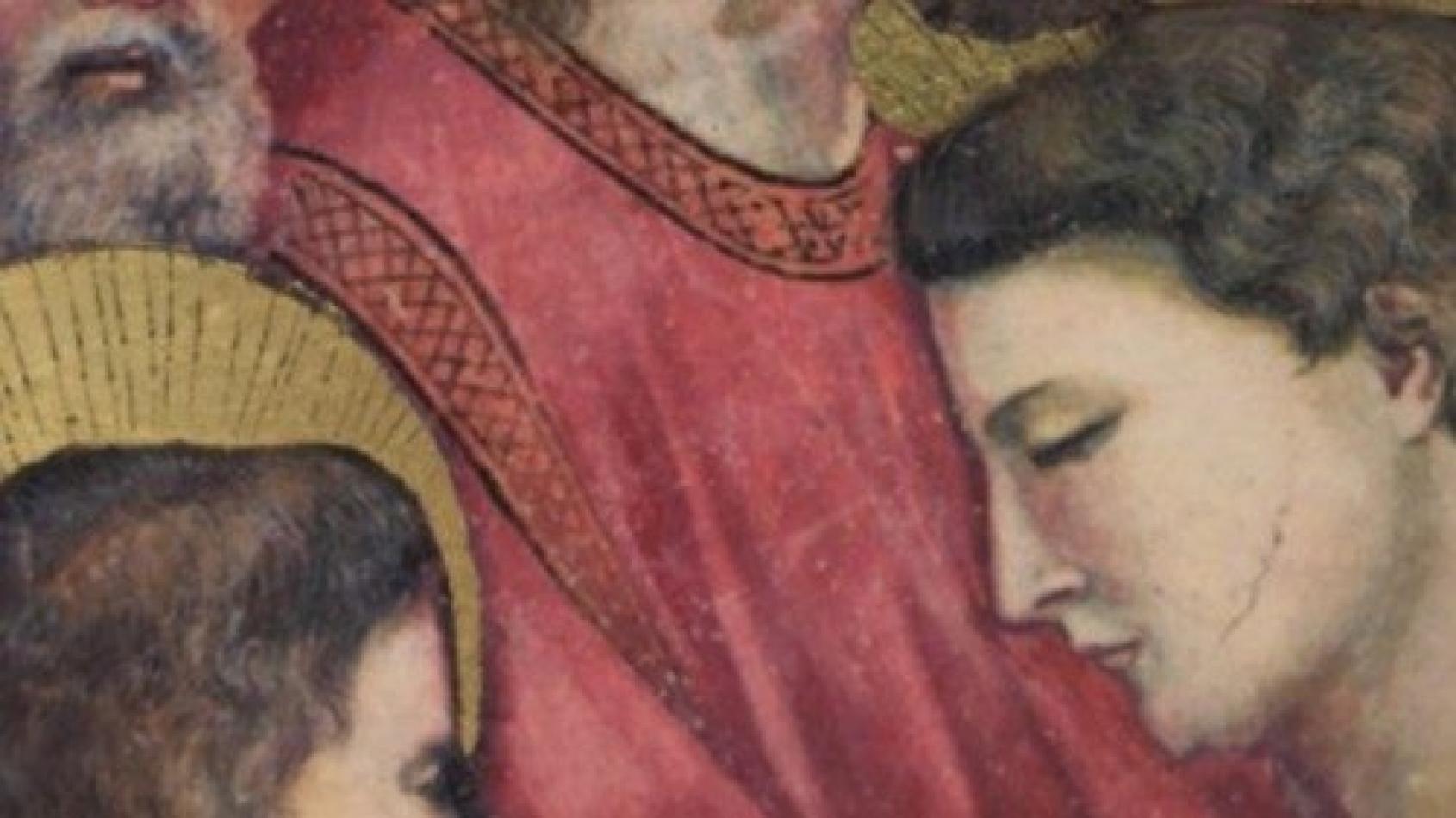Daniel Comboni
Comboni Missionaries
Institutional area
Other links
Newsletter
Easter is the unexpected triumph of Life, which makes certain Hope come to life. Easter is the morning star that illuminates the deep night and opens the way to the midday sun. Easter is the explosion of spring that inaugurates the time of beauty, the season of colours, song, and flowers. Easter is the beginning of the new creation!
“Tell us, Mary: what did you see on the way?”
“He must rise from the dead.”
John 20:1-9
“Death and Life have confronted each other
in a prodigious duel.
The Lord of Life was dead;
but now, alive, He triumphs.”
(Easter Sequence)
We have reached the Lord's Easter, walking the path set out by the Church, our mother. After Lent, we entered the Paschal Triduum. What we have lived through in these three days has remained engraved in our hearts. We have seen Love kneeling at our feet. Then we saw Him mocked, blasphemed, and crucified. Finally, we held Love, dead, in our arms, and, crying and beating our breasts, we buried Love. It seemed that the greatest love story had come to an end. Yet we had forgotten that love never dies. It is a seed full of the power of life that, falling to the ground, bears much fruit. And today, Easter day, life bursts forth from the tomb!
Easter is the unexpected triumph of Life, which makes certain Hope come to life. Easter is the morning star that illuminates the deep night and opens the way to the midday sun. Easter is the explosion of spring that inaugurates the time of beauty, the season of colours, song, and flowers. Easter is the beginning of the new creation!
Mary, the woman of dawn
But let us allow Mary Magdalene to tell us about Easter. She, the woman of the glorious dawn, the first announcer of Christ’s resurrection. Mary Magdalene – as all the evangelists agree – holds a firsthand testament, the firstfruits of womanhood, “the apostle to the apostles,” as the ancient Fathers of the Church call her. She is the perfect image of the Church, the passionate bride who spends the night searching for her Beloved. Her passionate love for the Master kept her heart awake throughout the long night of the great “Passover”; “I sleep, but my heart is awake” (Song of Songs 5:2). And because love kept her awake, the Beloved first revealed Himself to her.
It is to her we wish to ask: “Tell us, Mary: what did you see on the way?” Tell it with the fire of your passion. Let us behold in your eyes what your heart has seen! Because the testimony of an apostle is of no value if it is not lived with your very passion!
“Tell us, Mary: what did you see on the way?
‘The tomb of the living Christ, the glory of the risen Christ, and His angels as witnesses, the shroud and His garments. Christ, my hope, is risen: He goes before His own into Galilee.’
Yes, we are sure: Christ is truly risen.”
(Easter Sunday Sequence).
Mary, “the lover”
What characterises Mary Magdalene? A great love! She is a woman passionately in love with Jesus, who refuses to accept the prospect of losing Him and clings to that lifeless body as her last opportunity to touch “the one her heart loves” (Song of Songs 3:1-4). If the “beloved disciple” (possibly the apostle John, according to tradition) is the prototype of the disciple, Mary Magdalene is, in some ways, his female counterpart (without overshadowing the figure of the Virgin Mary). Mary Magdalene is the “preferred disciple” and the “first apostle” of the Risen Christ. She, called twice by the generic name “woman,” represents the new suffering and redeemed humanity, the Eve converted by the Love of the Bridegroom, that love lost in the Garden of Eden and now recovered in the new garden (John 19:41) where her Beloved had descended (Song of Songs 5:1).
Remaining and weeping
Mary Magdalene’s vocation is driven by love and, at the same time, by faith. Both faith and love are necessary: faith gives strength to walk, love gives wings to fly. Faith without love does not take risks, but love without faith can lose its way at many crossroads. Hope is the daughter of both.
It is love and faith that urge Mary Magdalene to stay near the tomb, to weep and hope. Even though she does not fully understand why. Unlike the two apostles Peter (a figure of faith) and John (a figure of love), who move away from the tomb, the woman, who unites both dimensions, “remains” and “weeps.” Her remaining is the fruit of faith, her weeping is the fruit of love. “Remaining” because her faith perseveres in seeking, not discouraged by failure, questioning (the angels and the gardener), just like the Beloved in the Song of Songs. She hopes against all hope! Until, finding the Beloved, she throws herself at His feet, embracing them in a vain attempt to never let Him leave again (Song of Songs 3:1-4).
Today, we, disciples and friends of Jesus, on the contrary, easily capitulate in front of the “tomb,” walking away. We lack the faith to hope that from death, emptiness, and defeat, life can rise again. We no longer have “faith in miracles,” there is no longer space in us to hope in a God who can raise the dead. We hasten to close those “tombs” with the “great stone” (Mark 16:4) of our unbelief. Our mission then becomes a desperate struggle against death. A task doomed to failure, because death has reigned since the beginning of the world. We end up settling for the work of mercy of “burying the dead” (with or without embalming), forgetting that we have been sent to raise them up (Matthew 10:8).
To face the tomb is the Rubicon crossing of the apostle, his crossing of the Red Sea (Exodus 14-15). Without removing the stone of our unbelief, to face and overcome this terrible enemy, we will not see the glory of God: “Did I not tell you that if you believe, you will see the glory of God?” (John 11:40).
We do not like to weep, no doubt because we love little. “Weeping is characteristic of the feminine genius,” said Pope John Paul II. Perhaps women are more capable of love. “Where your treasure is, there your heart will be also” (Matthew 6:21). Mary Magdalene’s heart is always in that garden, where she said farewell to the Master, and this is why she is there, weeping. Our hearts forget our dead too quickly; preoccupied with the “many things to do,” we do not have time to remain and weep with those who suffer!
The boldness to remain and weep is not sterile. To Mary Magdalene’s tears, the angels respond, not by returning the corpse she asks for, but by announcing that “the One she loves” is alive! But her eyes need to see and her hands to touch the Beloved, and Jesus finally yields to the insistence of Mary’s heart and goes to meet her. When He calls her by the name “Mariam,” her heart trembles with emotion at recognising the Master’s voice.
Being called by one’s own name: this is the deepest (unspoken) desire we carry within us. Only then will the “person” reach the fullness of their being and the awareness of their identity; until that moment, they will have walked in the dark! Only then can they say, with the fire of a heart in love, “I have seen the Lord,” and on that day, like Mary, we too will become witnesses of the Risen One.
“Yes, we are sure: Christ is truly risen!”
Wishing you a holy and joyful Easter!
P. Manuel João Pereira Correia, MCCJ
Easter: Mary Magdalene, Peter and “the other disciple”
Commentary on a John 20, 1-10
In this Easter Sunday, we read the first part of John’s chapter 20th. There we can meet a community formed by three disciples: Mary Magdalene, Peter and “the other disciple” (let us call him John, following a long tradition). They, apart from being themselves, represent us all, disciples who try to learn from our Teacher the new life that He is showing to us. I invite you to read carefully, meditate and contemplate this Gospel. Let us go a bit into detail:
1. Mary Magdalene: unconditional love
Mary was, doubtless, an extraordinary woman. We do not know much about her previous life, but we do know that she has found in Jesus her faithful Friend, her undisputed Teacher and the Master of her life… She went after Him from Galilee to Jerusalem, in good and bad moments, and she stayed by Him till death, more, beyond death.
In fact, according to John (and other evangelists), she went to the place where Jesus was buried out of pure faithfulness, even in spite of not knowing how to remove the big stone and presuming that Jesus was dead. That was not important for her, because her love was absolute and unconditioned. And this definitive, unbroken love was rewarded with the stone removed and the vision of Jesus as He really is now, in his most authentic reality, not as a dead man but as the ever living Son of the Father.
Contemplating this woman, we are inspired and moved to imitate her in this radical, total love, and to give ourselves up to Him, in good and bad moments, no matter what kind of stones are put to separate us from Him, knowing as she did that Jesus is worthy of our love and our trust; and that Jesus is revealing Himself alive and present in our life, in our Church, in our World. It is this experience of Jesus alive in us that makes us missionaries, witnesses to the world.
2. Peter, a sinner ready to learn
Peter was, somehow, the chief of that small group of disciples, but it does not seem to be the one, who believed most clearly, or the cleverest one, or the one to understand things quicker. He was not the first one to go to the tomb; neither was he the first to arrive… He rather was the latest one to arrive, to understand things, to catch God’s signs… But he was humble, he was able to acknowledge his errors and sins, he knew how to open himself to others and how to learn from them.
Contemplating Peter, many of us feel represented in him. We, also, have our own history of sins, errors and unfaithfulness; we too are quite often slow to understand God’s ways; we too find it difficult to see the presence of God in our today’s world, in our Church, in our community; we also lack confidence and are afraid to be deceived. But, as Peter did, we can open ourselves to the help of others, allow ourselves, once more, to be accompanied and to be conquered by Jesus, and then say humbly: “Lord, you know that I love you”.
3. “The other disciple”
Among the disciples there was one (let us call him John), who was quicker and readier to see the new action of God in the world, able to go over the superficialities of live. There are many things that only love knows how to see, and it seems that John had that type of love that was enabling him to see beyond superficialities.
Also among us today there are some who seem to be quicker and smarter than the others: they are able to discern the signs of the times; they feel where the “wind” of God is pushing humanity; they have the capacity to look further… These ones are a gift for the community with one condition: That they learn to be members of a community that they do not go on by themselves alone, that they accept and adapt to the rhythm of the others. Only in that way the community is built up, only in that way Jesus reveals himself alive, only in that way we become real missionaries, starting with Jesus the new “week” of regeneration for Humanity.
In fact, as God created the world in a symbolic “week”, according to the book of Genesis, in the same way in Jesus He is creating a new Humanity. As Mary Magdalene, Peter and John, we too believe in this new creation, this new sunrise, no matter how big are the stones on our way. God’s love is stronger than sin and death. In God everything is re-created, re-generated, re-“newed”. And we are part of this project.
Fr. Antonio Villarino, MCCJ




